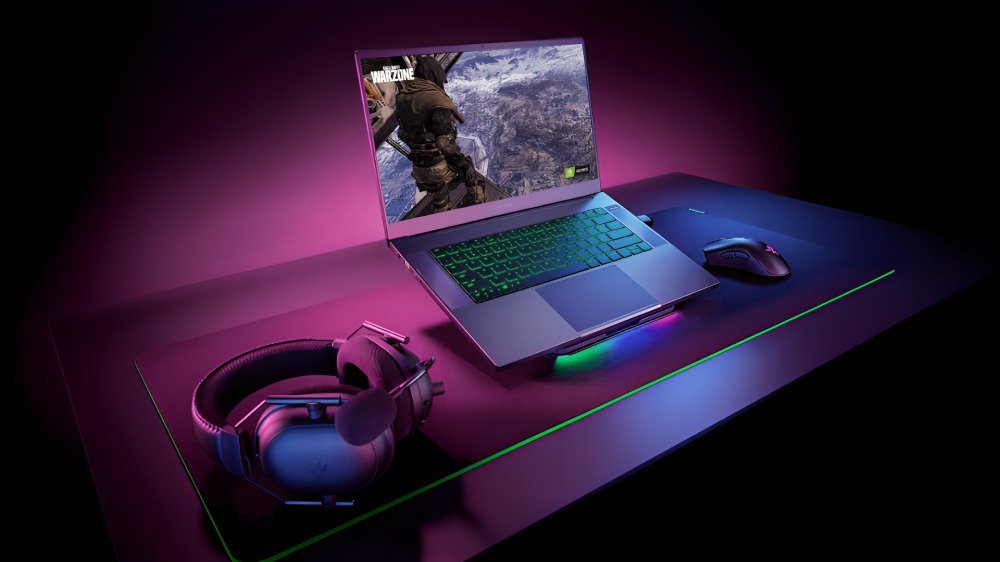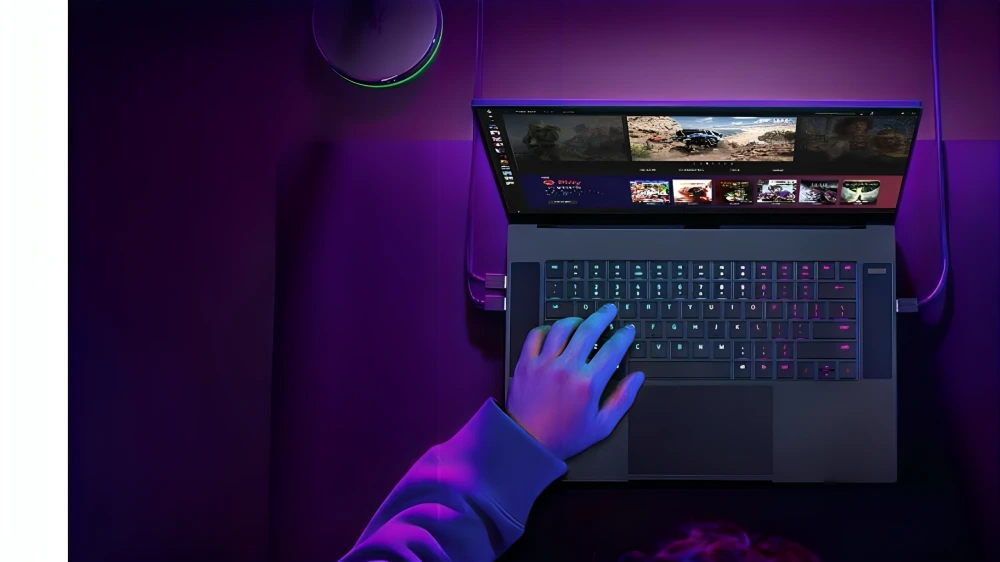Gaming laptops have long walked the fine line between power and portability, and Razer has been one of the leaders in this space. The Razer Blade 15 2018 H2 was hailed as a sleek, premium, and high-performing gaming machine when it launched in October 2018. Even years later, it continues to offer decent specs for mid-range gaming and productivity work. However, like many high-performance laptops, it suffers from one glaring issue over time—temperature management.
Recently, one of my friends contacted me on temperature issues on his Razer Blade 15 2018 H2. I learnt some of the frequent reasons that lead to the overheating and the solution to these reasons after a few research and practice troubleshoot.
Razer Blade 15 2018 H2 – Overview
Before diving into the thermal problems, let’s revisit the hardware specifications and features that made the 2018 H2 edition of the Blade 15 such a compelling option for gamers and creators alike.
| Component | Specification |
| CPU | Intel Core i7-8750H (6 cores, 12 threads) |
| GPU | NVIDIA GeForce GTX 1060 / GTX 1070 Max-Q |
| RAM | 16GB DDR4-2667MHz (Upgradeable to 64GB) |
| Storage | 256GB / 512GB SSD |
| Display | 15.6″ FHD IPS (1920×1080) or 4K UHD IPS |
| Ports | USB 3.1, HDMI 2.0, Mini DisplayPort, Thunderbolt 3 |
| Chassis | CNC aluminum unibody, ultra-slim design |
| Release Date | October 10, 2018 |
Despite its age, these specs remain respectable for 1080p gaming, content creation, and multitasking. But performance isn’t the only metric that matters in long-term use.
Performance vs. Heat: Where the Problem Starts
It’s a known fact: powerful hardware in a slim chassis means managing thermals becomes a big challenge. With a 6-core CPU and discrete graphics crammed into a compact metal body, the Razer Blade 15 2018 H2 constantly walks the tightrope between performance and heat dissipation.
What tipped me off during the troubleshooting process was when the laptop was idling at over 90°C (194°F). Under heavy load, the system would throttle performance to prevent damage — sometimes exceeding 95°C or more, well beyond comfortable operating temperatures. Ideally, during gaming or intensive work, temperatures should stay under 80°C (176°F) to maintain stability and longevity.
Airflow Design and Limitations

The Blade 15 2018 has big air intake on the bottom, and the exhausts forcing the air out on the back. This works efficiently on paper: however, it does not if the airflow is not free. The only down side to this design is that it renders the laptop to be extremely sensitive to its operating environment. Probably you will block the intake vents particularly when you are using the laptop on soft surface such as bed or couch. This does not allow its cooling and results in storing of heat inside the components. Dust inside the vents and fans inside the computer that would have accumulated could choke the cooling ability even with the open desk system.
Why Overheating Happens in the Razer Blade 15 2018 H2
While all laptops are susceptible to heat over time, this model faces some very specific issues:
- Old or Dried-Out Thermal Paste:- GTX GPUs and i7-8750H create too much heat when they are under pressure. When the TCP (that carries the heat generated on the CPU/GPU to the heatsink) turns dry it becomes inefficient in conducting the heat. It is normal that the stock paste will degrade after 3-4 years.
- Dust Accumulation:- The vents to the intake are slowly blocked by dust and the blades of the fan are encased with dust. This may significantly lower cooling efficiency.
- Narrow Cases Limitations:- The slim metal chassis does not allow such large heatsinks or vapor chambers, as do the bulkier gaming counterparts. Advanced cooling just does not have enough physical space.
- Heavy Usage:- A large number of users leave the Blade 15 connected to get the best output of the Razer during gaming or creativity. Hours a day of running at peak power is bound to take a toll over time on the thermal performance.
How to Fix the Razer Blade 15 2018 H2 Overheating Issues
In my friend’s case, the primary culprit was hardened thermal paste and dust. Here’s how we fixed it—and what you can do too.
- Replace the Thermal Paste:- This is arguably the most effective fix. A fresh application of high-quality thermal paste (like Arctic MX-6 or Noctua NT-H2) can drop CPU and GPU temperatures by 10–15°C or more.
However, replacing thermal paste isn’t for everyone. It requires:
- Removing the bottom panel
- Unscrewing the heatsink assembly
- Cleaning old paste without damaging the chip
- Reapplying new thermal compound evenly
If you’re unsure, take the laptop to a professional technician. A mistake here can permanently damage the motherboard or void warranty coverage.
- Clean the Internal Fans and Vents:- Dust is a silent killer. If you hear your fans running louder than usual or notice performance drops, it might be time to clean the fans.
- Use compressed air to gently blow dust from intake/exhaust vents.
- If you’re confident, open the laptop’s back panel and use a soft brush or small vacuum to clear the internals.
- Regular maintenance (every 6–12 months) is key to consistent airflow.
- Use a Cooling Pad or Laptop Stand:- Elevating the laptop with a good cooling stand can vastly improve air circulation. Some even have built-in fans to help push cold air into the intake vents.
- Avoid using the laptop directly on your lap, bed, or couch.
- If portability matters, choose a folding or compact laptop stand for mobility.
- Adjust Power Settings and Fan Curves:- Razer Synapse software lets you manage performance modes. Switching to “Balanced” or creating custom fan curves can keep thermals in check without drastically impacting performance.
Razer Blade 15 2018 H2 Temperature Benchmarks
After replacing the thermal paste and clearing the dust, these were the results on the GTX 1060 model under different workloads:
| Task | Before Fix | After Fix |
| Idle | 90–92°C | 40–45°C |
| Web Browsing | 85–88°C | 50–55°C |
| Gaming (Valorant) | 95°C+ | 75–78°C |
| Gaming (COD: Black Ops 4) | 97°C | 80–82°C |
These numbers show just how critical proper thermal maintenance is for the longevity and usability of the Blade 15.
Conclusion
The Razer Blade 15 2018 H2 is still a strong performer for casual and mid-range gaming, productivity, and even some creative workflows. However, its biggest enemy over time is heat buildup, caused by dried thermal paste, dust, and poor airflow habits. Whether you still use this laptop or are planning to purchase a second-hand one, do not forget to check its thermal paste. Spending on a cooling pad, dust-freeing the internals and refreshing the thermal paste every few years will keep this slick gaming machine both running cool and strong.
Even in the case of my friend, all that was needed was the replacement of the paste and cleaning of the fans to restore the original performance of the laptop. That alone demonstrates how even simple maintenance can go a long way especially in thin and powerful machines such as the Blade 15.
Read Our More Blogs:- AutoDraft AI: Empowering Creators to Animate Content and Monetize Online
